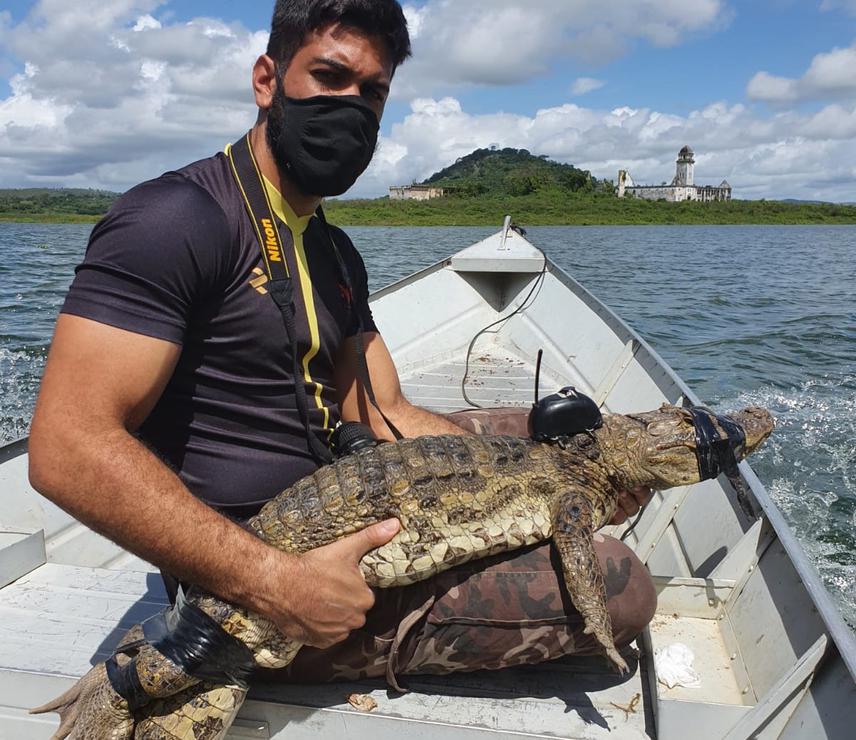Paulo Braga Mascarenhas Júnior
I intend to investigate aspects related to the space-time ecology of the Broad-snouted Caiman (Caiman latirostris) in a reservoir formed by damming of the Tapacurá River, in North eastern Brazil. I will access information about population structure, habitat use and home range by combined use of night counts, mark-recapture methods, and GPS-tracking. All data will integrate information from previous and new field surveys, totalling a 7-years’ time-series. Results will allow for the establishment of effective conservation measures for the species and surrounding environments, allying technical-scientific strategies with practices of local riverside communities.

Broad-snouted caimans Caiman latirostris (Daudin, 1802), are the largest crocodilians inhabiting streams and lakes in the Atlantic Forest of eastern Brazil. Over the last century, more than 92% of the original forest cover in this region has been replaced by agriculture or urban areas, and its water courses have also been dammed to supply cities and hydroelectric power plants.
Considering these fast-changing environments, information on population structure, dynamics and spatial ecology are extremely scarce for wild populations of Broad-snouted Caimans, preventing effective planning of long-term conservation strategies. This information gap is especially worrisome in the northern Atlantic Forest, where long-time studies are absent. In these areas, riverside communities rely on fishing for subsistence, and interaction between caimans and fishing nets results in occasional injuries or death of individuals. In State of Pernambuco, 25 reservoirs are included in the Atlantic Forest domain. Among them, the Tapacurá reservoir is surrounded by a mosaic of native forest and environments modified for different purposes.
Different sectors of the reservoir are subject to distinct conservation management, including areas under strict protection and areas where fishing and other human activities are tolerated. In other environments, home range and movement of Broad-snouted Caimans are significantly affected by the quality of the surrounding habitat, but whether these relationships apply to populations isolated in artificial reservoirs is still unknown. I decided to undertake this work because effective monitoring, based on high-quality spatial and population data, are urgently needed in order to safeguard the relict Broad-snouted Caiman population in the Tapacurá reservoir, and to understand the relationships between different protection regimes and the spatial ecology of these caimans.